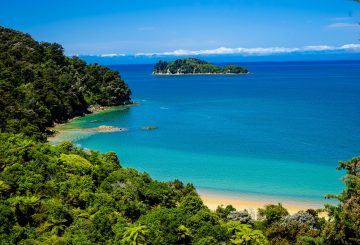天気が良ければ、火曜日の夜にニュージーランドでチョウザメのスーパームーンが見られます。
15年のキャリアを持つ天体写真家のジョナサン・グリーンが久米天文台で月を観測します。「青い」チョウザメの月は午後6時頃に昇ります。「ブルームーン」と呼ばれていますが、実際には青いわけではありません。その名前は、月に複数の満月があることを意味します。グリーンは、特別な光景になると言っています。
写真を撮りたいなら、グリーンがアドバイスをくれます。携帯電話だけを使うのは難しいかもしれません。彼は、望遠鏡の接眼レンズを通して月に焦点を合わせて、携帯電話で望遠鏡を使うことを提案している。こうすることで、写真では月が大きく見えるようになります。
望遠レンズを使うと、月を正面にある物体に比べて大きく見せることもできます。良いショットが撮れるかどうかはタイミング次第です。月が昇ったり沈んだりするタイミングを撮影すると、興味深い前景のディテールを加えることができます。緑は月がとても明るいので、写真を露出オーバーにしないように警告しています。また、フラッシュの使用は避け、カメラの手動設定の使用を推奨しています。
デジタル一眼レフカメラやミラーレスカメラには、頑丈な三脚が不可欠だとグリーン氏は言います。20年近くの経験を持つもう1人の天体写真家であるMayank Mrugは、10年前のデジタル一眼レフを画像に使用しています。彼は、焦点距離300mmで、「ルーニー11」と呼ばれるルールに従って撮影することを提案しています。つまり、満月を撮影するときはシャッタースピードを1/11にする必要があります。
経験豊かなフォトグラファーは、複数の画像や動画を組み合わせてより詳細に表示するスタッキング方式を試してみるといいでしょう。
緑は練習を強調しています。写真の品質はカメラによって異なることがあるので、他の満月の夜にも練習することを勧めています。
写真がどのような仕上がりになっても、月を見るだけでも素晴らしい経験になります。空が晴れていれば、緑は誰もがブルームーンを楽しむように促します。




















































-360x245.jpg)









